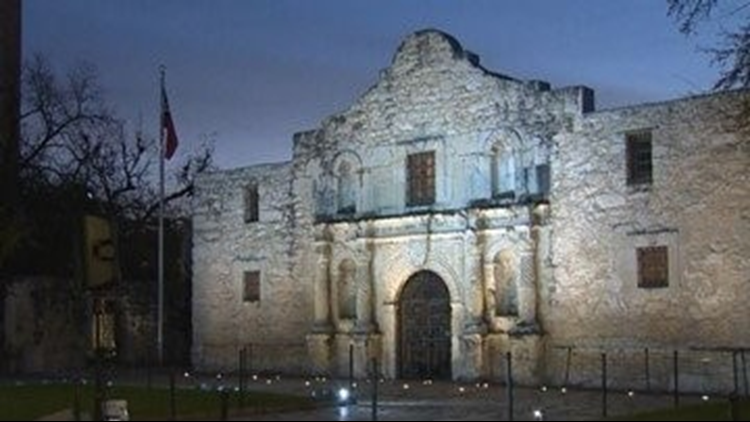The siege and the final assault on the Alamo in 1836 constitute the most celebrated military engagement in Texas history.
The battle was conspicuous for the large number of illustrious personalities among its combatants.
These included Tennessee congressman David (Davy) Crockett, entrepreneur-adventurer James Bowie and Mexican president Antonio López de Santa Anna.
Although not nationally famous at the time, William Barret Travis achieved lasting distinction as commander at the Alamo.
For many Americans and most Texans, the battle has become a symbol of patriotic sacrifice. Traditional popular depictions, including novels, stage plays, and motion pictures, emphasize legendary aspects that often obscure the historical event.
Santa Anna crossed the Rio Grande on February 12, 1836, and - a month earlier than expected - he arrived outside Bexar on February 23.
Travis dispatched a note to Gonzales calling for reinforcements and numbering the defenders at 150. The next day, he wrote his Letter from the Alamo, probably the best known of all Texas documents.
Reinforcements under Captain Albert Martin arrived from Gonzales on March 1.
With the arrival of the last of Santa Anna's forces, Travis was able to send out only one last appeal on March 3.
Again, he echoed the determination of the fortress to withstand surrender:
"A blood red banner waves from the church of Bejar, and in the camp above us, in token that the war is one of vengeance against rebels: they have declared us as such, and demanded that we should surrender at discretion, or that this garrison should be put to the sword. Their threats have had no influence on me, or my men, but to make all fight with desperation, and that high souled courage which characterizes the patriot, who is willing to die in defence of his country's liberty and his own honor..."
After the battle, the Texan bodies were burned.
The pyre was constructed about 3 p.m. on March 6, and was lighted about five according to Francisco Antonio Ruiz, who went on to report:
"The gallantry of the few Texans who defended the Alamo was really wondered at by the Mexican army. Even the generals were astonished at their vigorous resistance, and how dearly victory was bought..The men (Texans) burnt were one hundred and eighty-two. I was an eyewitness, for as alcalde of San Antonio, I was with some of the neighbors, collecting the dead bodies and placing them on the funeral pyre."
After the fall of the Alamo in 1836, the church and buildings were largely abandoned.
The government of the Republic returned the chapel to the Catholic Church, but after annexation, the U.S. Government claimed it again for military use. In the ensuing years, both U.S. and Confederate forces used the building to house quartermaster stores and munitions.
The U.S. Army continued to lease the property until 1876.
Bishop John Claud Neraz's offer to sell the Alamo in 1882 was made to Frank W. Johnson, first president of the Texas Veterans' Association.
He, in turn, passed the information on to the governor with a recommendation that the State purchase the building.
On April 23, 1883, the Texas legislature passed an act authorizing the purchase of the Alamo.
Money from the sale went to complete a new chancery building for the San Antonio diocese.
The Texas State Library and Archives Commission contributed to this article.



